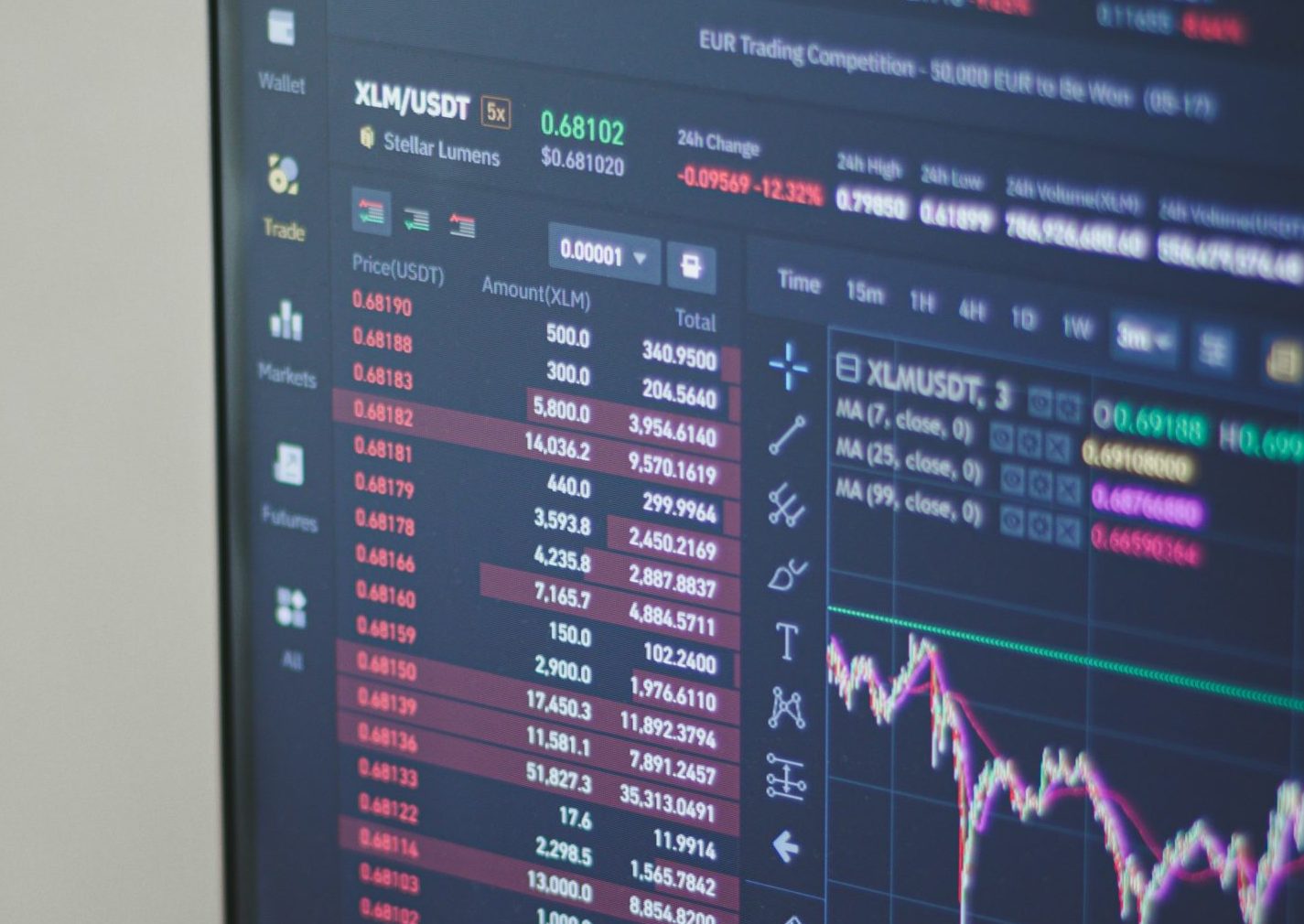Photo by Behnam Norouzi on Unsplash
On Monday, the Dow Jones Industrial Average saw dramatic swings, ending the day down 349 points after a day filled with volatile trading. The turbulence in the markets was sparked by mixed messages surrounding President Trump’s tariffs, which caused confusion and prompted sharp reversals between moments of gains and losses.
The trading session was one for the record books, as the Dow experienced its largest intraday point swing ever. At its worst, the index fell over 1,700 points before rebounding by more than 2,500 points from the low, ending the day down by 349 points, or 0.91%.
Meanwhile, the S&P 500 finished down 0.23%, but it too saw a drastic 8.5% range in its high and low points, a fluctuation that has only occurred 20 other times since 1962. At one point, the S&P 500 even entered bear market territory before settling near 18% off its recent peak. The volatility reflected deep investor uncertainty surrounding the ongoing trade dispute between the U.S. and China.
Market Sentiment Shifts With Mixed Signals from the White House
The markets opened sharply lower on Monday as fears about escalating trade tensions between the U.S. and China took hold. But the mood briefly brightened after President Trump posted a message on social media suggesting that the U.S. was open to negotiating tariff terms.
“Countries all over the world are talking to us,” Trump wrote on his Truth Social platform. “Tough but fair parameters are being set.” His comments sparked a momentary rally, as investors hoped for a resolution in the ongoing trade war.
However, any optimism was quickly dashed when Trump escalated his rhetoric. Shortly after his initial message, the president threatened to impose an additional 50% tariff on Chinese goods unless China backed down from retaliatory tariffs it had recently imposed on U.S. products. With the U.S. tariffs already set at 34%, the prospect of a 50% tariff would push total U.S. tariffs on Chinese imports to a staggering 104%.
A Market in Flux: Reacting to Tariff Twists
As the news from the White House shifted once more, market sentiment once again turned negative. The early optimism that had sent stocks higher vanished as Trump’s renewed hardline stance on tariffs injected more uncertainty into the market. Investors, caught between the hopes for a trade deal and the reality of heightened tensions, saw their initial gains evaporate.
The day’s wild swings in stock prices highlighted just how reactive the markets are to shifts in U.S. trade policy. As Bret Kenwell, an investment analyst at eToro, pointed out, the level of volatility can be attributed to “immense uncertainty.” Investors are clearly uncertain about the next move in the ongoing trade war and how long it will last.
Tariff Tensions Take a Toll on U.S. Growth and Inflation
The implications of the tariff dispute go beyond the stock market. Analysts are concerned that prolonged tariffs could slow down U.S. economic growth and drive up inflation. Ivan Feinseth, a financial analyst at Tigress Financial, highlighted how the situation could harm both the economy and the Federal Reserve’s ability to manage interest rates.
“The tariffs could slow growth, increase inflation, and put the Federal Reserve on hold,” Feinseth explained. With higher tariffs, businesses would face increased costs, which they would likely pass onto consumers, leading to higher prices across the economy. The Federal Reserve, which has been raising interest rates to control inflation, might find itself in a difficult position if inflation continues to rise as a result of these trade policies.
The threat of higher costs has already prompted some companies to reconsider their investments, and a prolonged trade war could stifle economic activity even further. This makes it harder for markets to gain a clear footing and could extend the period of uncertainty.
Investors Look for Relief Amid Tariff Turmoil
Despite the tumultuous market movements, the brief rally caused by Trump’s initial comments demonstrated the market’s eagerness for any signs of progress in trade talks. Investors are clearly hoping that a resolution to the trade conflict will emerge soon, and any positive news on this front could provide a much-needed boost.
“The market is wound up to bounce back on positive news,” said Feinseth, noting that investor sentiment is highly sensitive to even small indications of progress in trade negotiations.
With both the U.S. and China engaged in a high-stakes trade war, the markets continue to be at the mercy of shifting political signals. Every announcement, every tweet, and every change in rhetoric can cause substantial swings in investor sentiment and, by extension, stock prices. Investors remain on edge, waiting for clarity and stability to return to the market.
Global Economic Impacts and Ongoing Uncertainty
The effects of the U.S.-China trade conflict are not confined to the U.S. alone. The uncertainty surrounding tariffs is reverberating throughout the global economy, with particularly noticeable effects on emerging markets. These countries, many of which rely heavily on exports, are seeing their economies slow due to declining demand from the U.S. and China, as well as the rising costs of trade.
Even developed economies are beginning to feel the pressure. As tariffs disrupt supply chains and trade flows, multinational companies are reassessing their global strategies. This shifting landscape of trade is making it more difficult for businesses to plan and invest, which could slow down overall economic activity around the world.
For now, the global economic picture remains clouded. The ongoing tariff dispute is casting a long shadow over the future of international trade and market stability, and it will take time to see how these tensions will be resolved—or if they will persist for the foreseeable future.
Conclusion: Navigating the Volatility of Global Trade
Monday’s market turbulence is a reflection of the uncertainty gripping the global economy. As the U.S.-China trade war continues to evolve, the stock market has been caught in a cycle of hope and fear, with investors reacting to every twist in the narrative. While temporary rallies based on positive news have provided brief moments of optimism, the overall atmosphere remains one of volatility.
As the trade war unfolds, both the markets and global economy face an unpredictable future. For investors, the key will be navigating these uncertain waters, holding out hope that the storm will eventually pass, and that stability will return to global markets.



